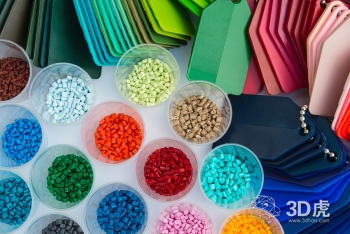When using plastic injection molding (PIM), it is important to control heat.
Most injection molds are made from cooling passages that are drilled or milled from a steel block. Cold water flows through these channels to cool the core and draw heat away from the plastic. Traditionally, these paths have been made by drilling straight holes. However, since the channel can only follow a straight line of sight path, the effectiveness of the method is limited when forming complex shapes.

The practice of conformal cooling overcomes this limitation. With conformal cooling, the channels can be designed to evenly follow the shape of the part, so they "fit" any shape for optimum efficiency and faster cycle times.
At Star Rapid, we have been researching to explore how metal 3D printing can be used for conformal cooling. Decided to evaluate the best way to improve cooling efficiency for 3D printing and apply it to existing PIM customer projects - Marco Beverage Systems water heaters.
Marco Beverage Systems designs and manufactures a wide range of coffee machines, hot water boilers, filters and coffee grinders. The company uses transparent, high-quality water storage cups to provide hot water to the coffee manufacturing system. This is a component manufactured using plastic injection molding and previously manufactured using conventional linear cooling channels.
The following outlines the steps of injection molding a plastic tool using a conformal cooling method in an attempt to streamline the production process while achieving high quality final parts.
Making plugins
The use of metal 3D printing technology to create a conformal cooling channel in large quantities requires longer time than conventional methods, but because of the reduced cycle time and improved product quality, the cost can be compensated, thereby reducing the cost of mass production. The conformal cooling channels are designed to fit snugly against the contour of the part while maintaining proximity to the inner wall of the tool for increased efficiency.
The insert was printed with maraging steel and oriented vertically on the printing table of a Reinshaw DMLM AM250 powder bed metal printer. Vertical printing avoids extra support and prevents the hole from collapsing.

After printing, the part still has a rough surface texture, which is produced when the part is built layer by layer using the 3D printing method. The insert was later CNC machined and polished to achieve high gloss. Although the total amount of coolant required for the new insert is roughly the same as the original insert using the straight channel, the channel of the new 3D print insert more closely follows the taper of the tool and has a larger exposed surface area.
Create core
Star Rapid engineers and engineers at LBC Engineering created two different CAD designs for the conformal cooling core. LBC is a subsidiary of Renishaw, which specializes in providing advanced design solutions for complex 3D printing applications. The Star Rapid design improves cooling efficiency, but the location of the channel does not leave enough room for other support structures in the mold.
The insert is mounted on the B side of the board, below (right side). This is the plate that opens and closes each cycle. The A side (left side) holds the core and remains fixed during each molding cycle.
Tools for polishing the outer surface are very important. This creates a smooth surface on the transparent part and helps the part to slip off the tool easily after forming.
result
Using a new injection mold, a series of tests were conducted to compare the results with the baseline study. The core and inserts of 3D printing perform better than traditional mold tools. Not only is conformal cooling able to greatly improve product quality, but it also reduces cooling time by 38 seconds, or 60%. This eliminates the need for additional manual air cooling.
The reduction in cycle time can save a lot of money for longer production runs and can greatly offset the relatively large cost of developing such a tool. Working closely with Renishaw and LBC Engineering, we have created a solution that significantly reduces cycle times while improving quality. As R&D efforts expand, we will continue to refine this process to accommodate future advanced applications.
Summer Inflatable Mattress Asst
Summer Inflatable Mattress Asst,Water Toys Inflatable Baby Mattress,Water Toy Baby Surfboard Mattress,Inflatable Surfboard Float Mattress
J&TZ CO.,LTD , https://www.inflatable-toy.com